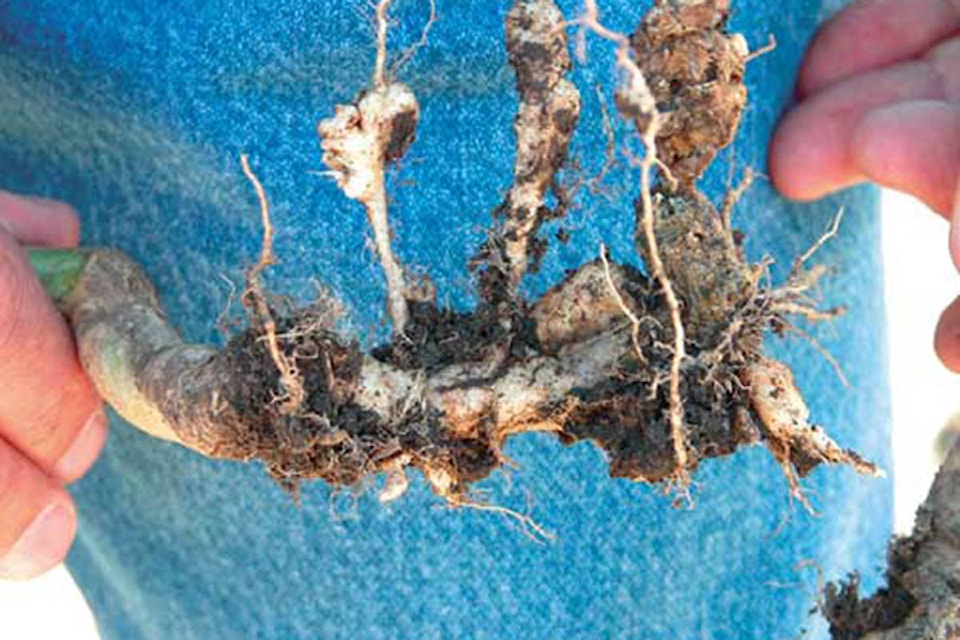A Red Deer County councillor is calling for a co-ordinated campaign against clubroot, a crop disease that has been spreading across the province for years.
Coun. Richard Lorenz said a farmer recently highlighted the toll the disease, which has affected hundreds of canola fields province-wide, takes on producers and their families.
The stress of finding the disease in his crop and the guilt that followed “just about drove him around the bend,” said Lorenz, who raises cattle.
The farmer said it’s time to accept that clubroot is here and to ensure that all producers are taking the same approach to protecting their fields.
Lorenz agrees more can be done.
“We’ve watched the maps grow redder every year with more cases of clubroot. When do we say it’s time to stop it?
“We are stewards of the land and we need to take responsibility for what’s going on and to help solve the problem before it becomes too big an issue to deal with.”
It is better to try to deal with the problem now before it becomes a crisis and sweeping regulations are required, he suggested.
Clubroot was first found in a few canola fields around Edmonton in 2003 and it’s been spreading ever since, now reaching as far south as Newell County.
Inspectors in Red Deer County, where clubroot appeared in 2011, confirmed 31 infested fields “and it is believed to be present in many more parcels,” says a Jan. 19 report to county council.
“Limiting access to infested fields is strongly encouraged to limit the spread of clubroot,” says the report from county agricultural manager Cody McIntosh. When clubroot is found, the landowner and neighbouring owners are notified.
Clubroot can affect many crops, including broccoli, cauliflower, Brussel sprouts and a number of others, but its impact on canola, a significant cash crop in Alberta, is most worrisome to many farmers.
The disease causes growths on roots, called galls, that significantly reduce yields. The disease can remain in fields for many years.
One of the best ways to control it is to use long rotations between planting canola crops in fields. Growing canola once every four years is recommended. It will not eliminate the disease, but will prevent severe infestations.
Clubroot-resistent seeds have been introduced in the past few years, although new pathotypes showing up in central Alberta are reducing the effectiveness of the seeds.
There are no registered fungicides that work for canola so far, says Alberta Agriculture and Forestry’s website.
Creating a stigma around the disease puts intense pressure on producers, who lose productivity and find lenders questioning the financial health of their farming operations. Under that scenario, some may be reluctant to report the disease.
“Those are the dilemmas that affect people and drive them to situations that none of us want to hear about,” said Lorenz.
Mayor Jim Wood agrees clubroot is a significant concern in Red Deer County, where the disease isn’t rampant, but has expanded.
“The last thing we want to do is keep a field secret. That doesn’t benefit the producer or his neighbour.”
Wood said crop rotation management and using anti-clubroot varieties will help control the problem.
“This isn’t the only disease we’ve had in Alberta. We’ve had fusarium for years and years.
“It’s important we don’t try to do it alone. If there’s a problem there, it’s important that every farmer gets the appropriate knowledge that they need in order to tackle the situation.”
This story was updated on Feb. 7 with additional information from Red Deer County.
pcowley@reddeeradvocate.com
Like us on Facebook and follow us on Twitter
